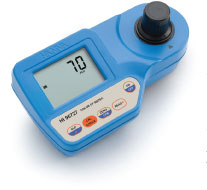
The U.S. Environmental Protection Agency (EPA) has established National Primary Drinking Water Regulations (NPDWR) that set mandatory water quality limits for drinking water contaminants. These enforceable standards are in place to protect the public against consumption of drinking water contaminants that present a risk to human health.
Primary drinking water contaminants are regulated based on established maximum contaminant levels (MCLs); if a primary drinking water contaminant is below the maximum concentration level, no hazards to human health will occur. The EPA has also established National Secondary Drinking Water Regulations (NSDWR) that set non-mandatory water quality standards for 15 drinking water contaminants. These secondary maximum contaminant levels (SMCLs) are not enforced by the EPA, but are recommended guidelines to assist public water systems in managing their drinking water for aesthetic considerations. These types of contaminants are not considered a risk to human health, but if the public perceives their drinking water as tainted, consumers may stop using the public water system.
Secondary drinking water contaminants are categorized under three conditions; those that have an aesthetic effect on the water such as taste, odor, or color; those that have a cosmetic effect on consumers such as skin or tooth discoloration; and those that have a technical effect on water systems such as corrosion, staining, and reduced efficiency. The presence of dissolved organic material such as tannins and inorganic contaminants such as metals may cause the water to have a color or tint.
Although these sources of color are harmless, most people find noticeable color in their drinking water objectionable. This will result in a rise of citizen complaints to the municipality and the decline of municipal water use. Since color can also result from suspended materials, it is important to ensure turbidity has been removed to assess waters true color. The standard method for color of water is the platinum-cobalt method.
With this method the unit of color produced by 1 mg platinum/L, in the form of the chloroplatinate ion, is reported as a Platinum Cobalt Unit or PCU. This scale is applicable only to clear or slightly colored liquids and is prevalent in industries such as drinking water treatment and water quality monitoring. The PCU scale ranges from 0-500, with zero representing distilled water and 500 representing 500 mg/L platinum as potassium chloroplatinate.

A local municipal drinking water facility wished to characterize the color of its raw and finished water. Due to seasonal influxes of iron content into the system, a slight tint to the water was detected even after removing suspended solids. Understanding the aesthetic and technical ramifications of colored water, the drinking water treatment facility slightly fluctuated their treatment during the summer months to control for the increase of color and was looking for a means of checking the system. Hanna Instruments recommended the Color of Water Portable Photometer - HI96727.
The customer appreciated that the HI96727 encompassed the entire range (0 to 500 PCU ) of the Platinum Cobalt Units scale. The HI96727C kit includes the Color of Water CAL Check™ Standards - HI96727-11. These CAL Check™ cuvettes provide a simple means to validate the color of water photometer and calibrate when necessary, assuring the customer that the photometer was providing accurate results. The customer was also supplied with both the HI740227 filter assembly and HI740228 filter disc so that they could remove suspended solids and measure the true color.
Sources:
http://water.epa.gov/drink/contaminants/secondarystandards.cfm
Standard Methods for the Examination of Water and Wastewater 19th edition, 1995, Method 2120
That's why we've dedicated our blog as a helpful resource for you to use! Catch up on the latest products, explore industry trends, discover testing tips, learn how to improve results, and more. Got questions? Email sales@hannainst.com.
